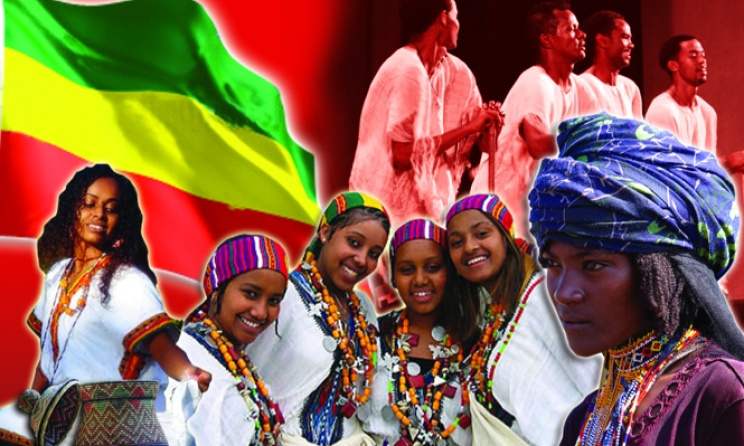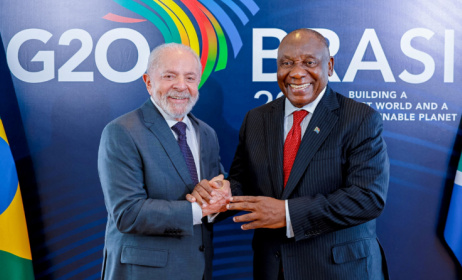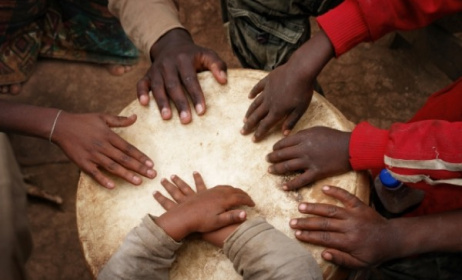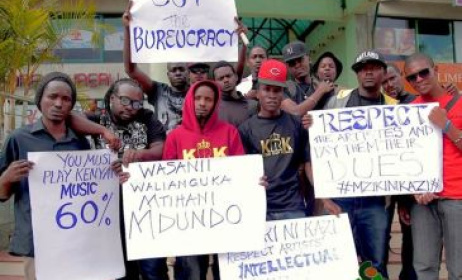Ethiopia’s cultural policy
By Fitsum Getachew
Ethiopia is an ancient country with a remarkably rich linguistic and cultural diversity. The country’s cultural industry is touted to be one of the oldest in the world and is exceptionally diverse. This diversity includes tangible and intangible heritage with both traditional and modern cultural expressions and languages, and centuries of know-how in handicraft production. Nine of Ethiopia's cultural and natural heritage sites are listed on UNESCO'S World Heritage Site, attesting to the outstanding universal value of Ethiopia's heritage. This text looks at the policies in place and challenges for the Ethiopian cultural sector.
 Ethiopian artists. Photo: www.sf.funcheap.com
Ethiopian artists. Photo: www.sf.funcheap.com
Ethiopia is home to more than 80 ethnic groups, each with its own language, culture, customs, traditions and lifestyle. A 2014 report on the contribution of copyrights to the Ethiopian economy shows that copyrights and related industries contribute about 4.73% of the annual GDP (Gross Domestic Product) of the East African nation.
Despite Ethiopia's enactment of a Copyright Law and the establishment of an institution to implement these laws, copyright infringement is still rampant. This is largely due to the weak capacity of the enforcement agencies and the lack of public awareness. The 1994 Federal Democratic Republic of Ethiopia’s Constitution[i] was officially promulgated and contained major principles and guidelines that were meant to govern the country. Cultural policy was one of the many policies and strategies that the constitution incorporated.
Ethiopia's little-known cultural policy was approved by the council of ministers in October 1997. The policy guaranteed equal access to culture for ‘all nations, nationalities and peoples of Ethiopia’. This was an attempt by the former Ministry of Youth, Sport and Culture[ii] (now the Ministry of Culture and Tourism) to put an end to all real and perceived discriminatory practices made by previous regimes, including the Derg regime, which was overthrown in 1991 after nearly two decades of bloody struggle. The policy included grand plans - among them developing the country's infrastructure - and issued Proclamation No. 4/1995 to restructure the office in charge of cultural affairs so that its operation could be commensurate with a democratic system.
It was only in October 2010 that this proclamation came into effect. In 2010, when Meles Zenawi was sworn in as the Prime Minister, the new Ministry of Culture and Tourism was formed. According to the Prime Minister, the changes in the restructuring of the ministry were needed due to the importance of Ethiopia’s cultural heritage and the contribution that it can have on the country's image and tourism potential. Ethiopia currently has a separate Ministry of Youth and Sport, which takes care of youth and policies that pertain to them, while the Ministry of Culture and Tourism focuses on the cultural aspects of the country and its direct relevance to the expansion of tourism.
Content and Objective of Policy
Among the other objectives of the policy approved in 1997 were: the creation of conducive conditions to carry out scientific research on the languages, heritage, history, handicrafts, fine arts, oral literature, traditional lore, beliefs and other cultural features; ensuring that all citizens could freely, equally and democratically participate in all cultural activities and to enable them to benefit from the sector; as well as creating situations favorable to creative artists and researchers working in the cultural sector.
However, structural change alone would not bring about the development of the sector. Thus Ethiopia’s cultural stakeholders have always advocated for the need to have a popular cultural policy that would set the direction of the sector’s development. It is also important to note that the sector was denied due attention by the government and the people, who were directly concerned by it, and were not given a chance to actively participate in the development of the sector.
To date, the 1997 policy has tried to address the issue of copyright as it is a major concern of the artists who are involved particularly in the music and film industry. In 2003 the Ethiopian Intellectual Property Office (EIPO) [iii] was formed to provide legal protection for intellectual property (IP) rights. Under a Director-General, the EIPO comprises five core business units and two support units. Besides legal protection, the EIPO office is also charged with the mandate to collect, organize and disseminate technological information contained in patent documents and encourage its utilizations.
Challenges affecting the cultural policy
According to a 2013 report by the MDG Achievement Fund[iv], state support for cultural pluralism in Ethiopia was very limited and institutional capacity continues to be inadequate. As in many other developing countries, population pressure, environmental degradation, poverty and global warming endanger Ethiopia’s natural and cultural heritage. The report notes that Ethiopia's living, indigenous knowledge and practices in nature management have not been utilized to safeguard these resources. In addition, the creative industries are not well developed due to numerous reasons, including an inadequate legal framework, the ineffective implementation of laws, weak operational capacity, inadequate entrepreneurial capacity and the traditional marginalization of artisans.
In 2013, the MDG Achievement Fund organized capacity-building training and workshops for government institutions, NGOs, religious institutions, community members and other stakeholders, which have contributed to mitigate the above-mentioned challenges.
With the exception of a 2014 report on the creative industries in Ethiopia, the absence of any baseline data or tangible statistical information with regard to culture and the creative industries, as well as their contribution to the national economy, has been a major challenge for the development of Ethiopia's cultural sector. The absence of tangible statistics has hampered the power of the sector to convince the government to allocate more resources and budget.
Conclusion
Due to the fact that Ethiopia’s cultural policy was formulated in the 1990s, there is a need for the policy to be reviewed and adapted to the current needs of the cultural sector. Capacity building through training is a significant step towards achieving the effective implementation of the cultural policy. However, proper structures to implement the policy are required. As outlined in Ethiopia’s 2011-2017 Growth and Transformation Plan (GTP) [v], protecting and promoting Ethiopian cultural diversity is a critical element of promoting the cultural policy. More importantly, the GTP should seriously look into promoting the culture of the various peoples of Ethiopia and developing these in harmony with the modern education system.
[i] http://www.wipo.int/edocs/lexdocs/laws/en/et/et007en.pdf [ii] http://www.mysc.gov.et/culture.html [iii] https://www.facebook.com/EIPO12/timeline [iv] http://www.mdgfund.org/program/harnessingdiversitysustainabledevelopmentandsocialchange [v] http://aigaforum.com/articles/eth-gtp-plan-half-way.pdf

































Comments
Log in or register to post comments